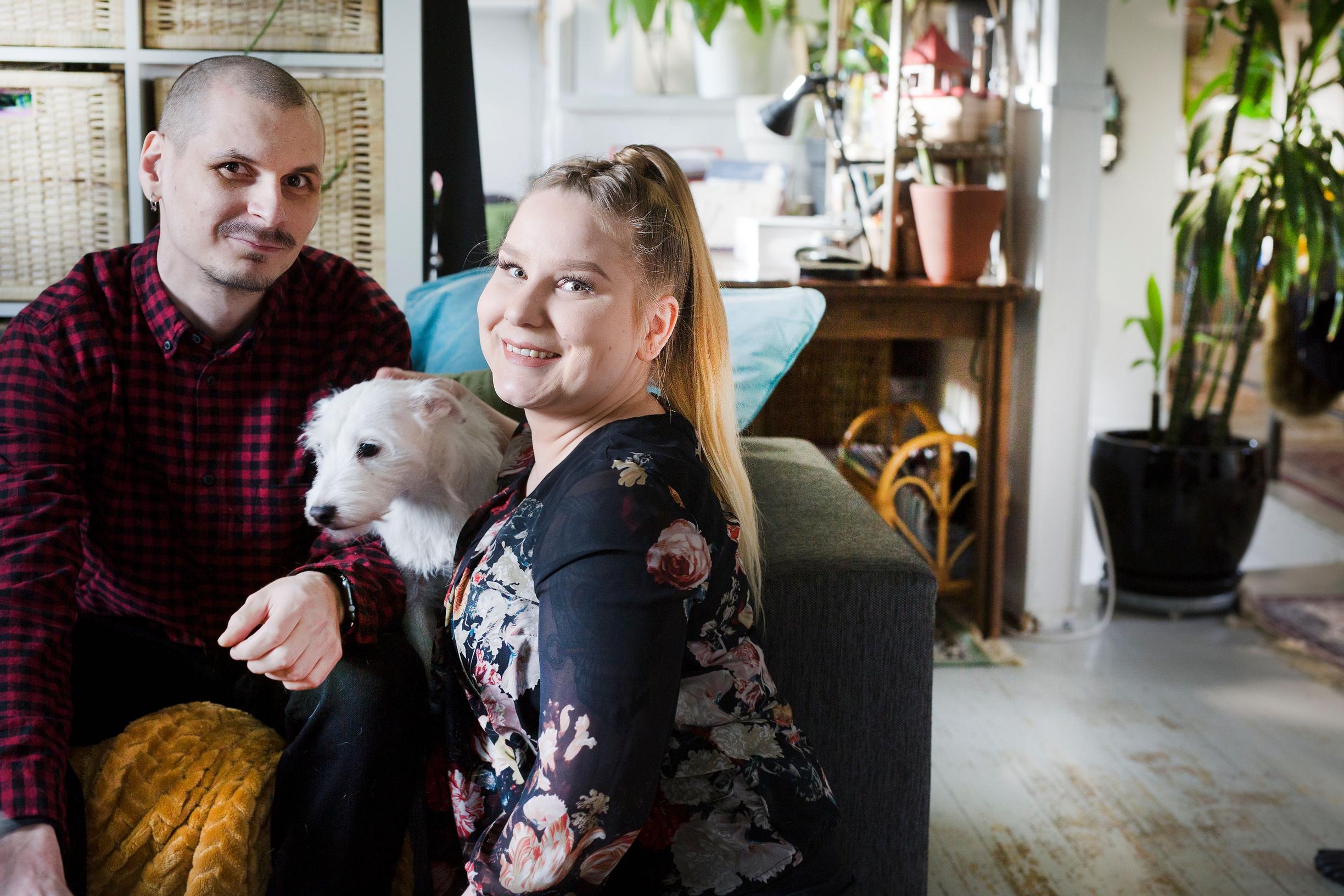
44 animals as roommates! Annika and Matti turned their home into an animal refuge
Annika Mykkänen and Matti Turunen share their home with more than 40 guinea pigs, rabbits, snakes, and lizards. Two of the rooms and the basement of the house belong entirely to these animals.
When you step in the entryway, you wouldn’t guess that this home houses more than forty animals. Kaapo the rescue dog and Pulmu the Parson Russell terrier greet us at the door, but the only sign of the rabbits and guinea pigs deeper inside the house is the delicate scent of hay.
Soon it becomes clear that two rooms and most of the 130-square-meter basement level of the home are dedicated to the afore-mentioned guinea pigs and rabbits. The terrariums the snakes occupy a wall-wide section of the living room, and there are lizards in the study. Next to the kitchen table, there stands a hamster’s terrarium.
Annika Mykkänen and her husband Matti Turunen operate an animal refuge at their home as volunteers. They take in rodents and reptiles that have no home.
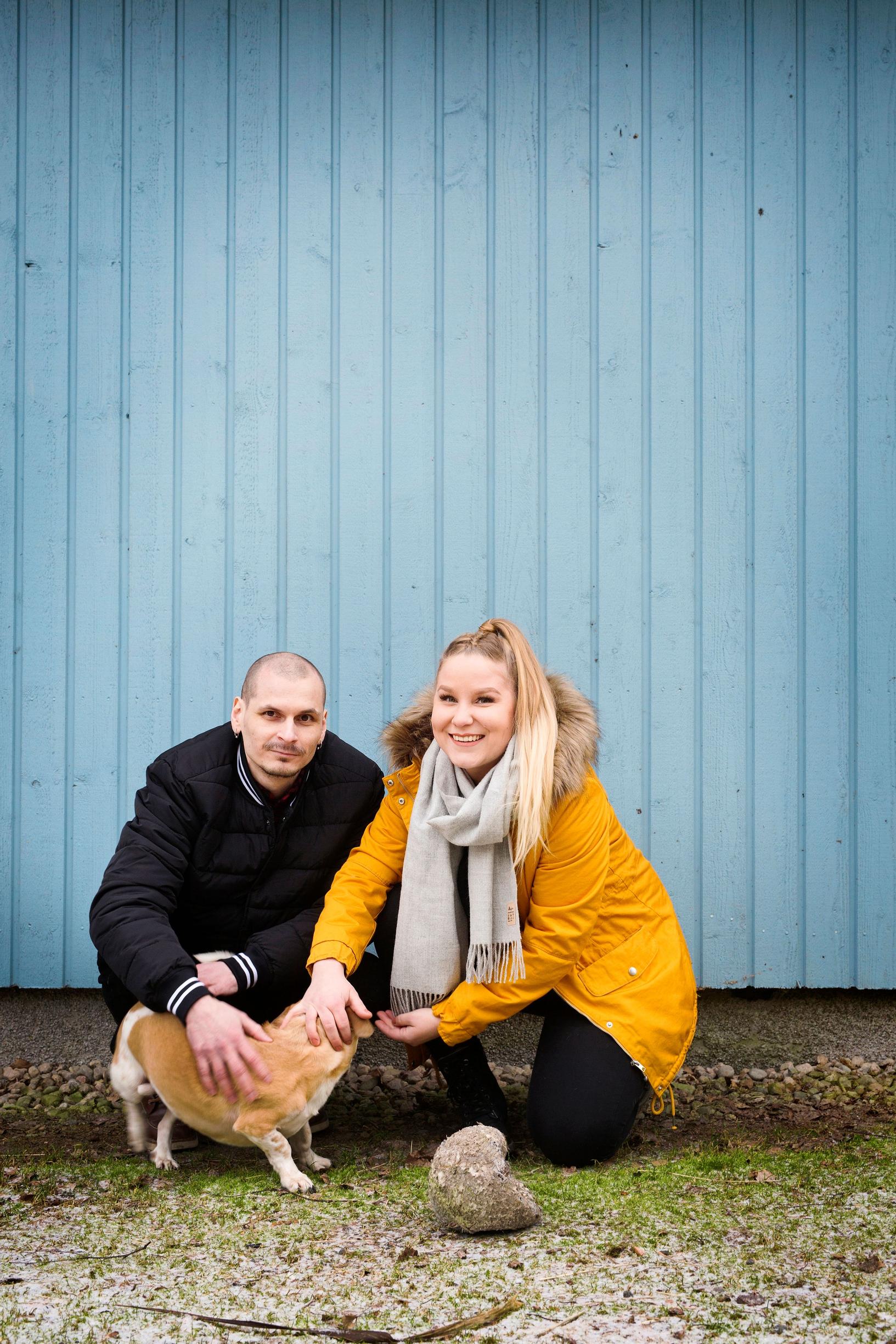
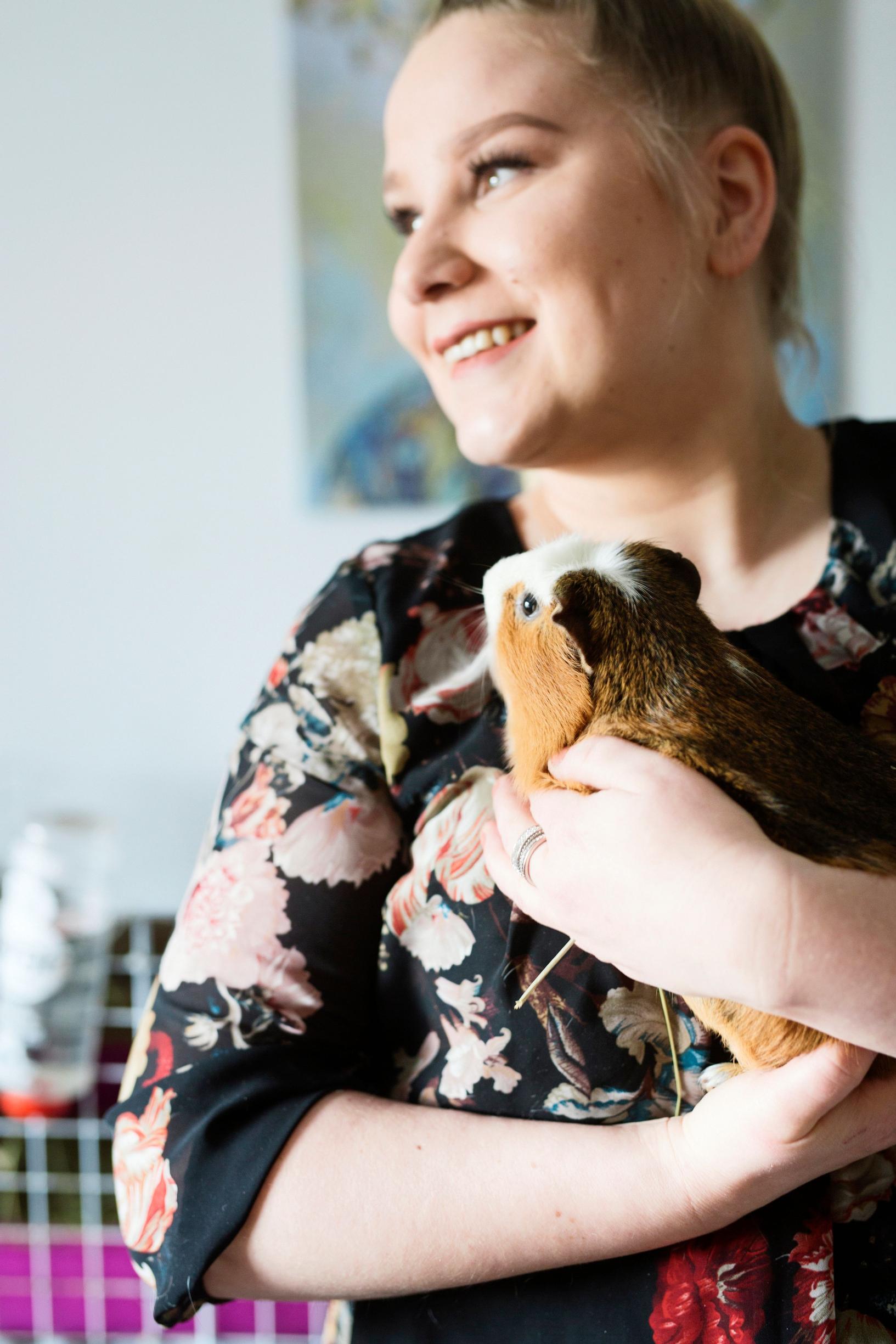
Annika has always been an animal lover. Five years ago, she wondered what type of volunteer work she could do.
“I noticed that there’s a huge demand for this, because animal welfare associations usually only take in cats and dogs.”
Animals have always been part of Annika’s life. At her childhood home, the family wondered how she could sleep when the animals were clattering away in their terrariums right next to her bed. When the family moved to Sweden in the late 1990s, it was a given that Annika’s lizards, hamster, and dog would move with them.
“Many parents would probably decide that the lizards or the hamster couldn’t come along. My mom pretended to complain, but the animals still traveled with us on every move.”
When Annika and Matti met 12 years ago, Matti quickly became familiar with Annika’s lifestyle. Right before their first date, Annika had been cleaning the cages of her animals. A bag of wood shavings had accidentally spilled on the floor, but in her rush, Annika left it there.
“I had no idea Matti would come over after our date,” Annika recalls.
When the pair arrived at Annika’s place, they were greeted at the door by two enormous great Danes that had spread the wood shavings all over the apartment. Matti wasn’t discouraged by the welcome.
“I just thought, ‘What wonderful dogs.’ My family used to have dairy cows in North Karelia, so great Danes and running a rescue shelter are small in comparison,” Matti says.
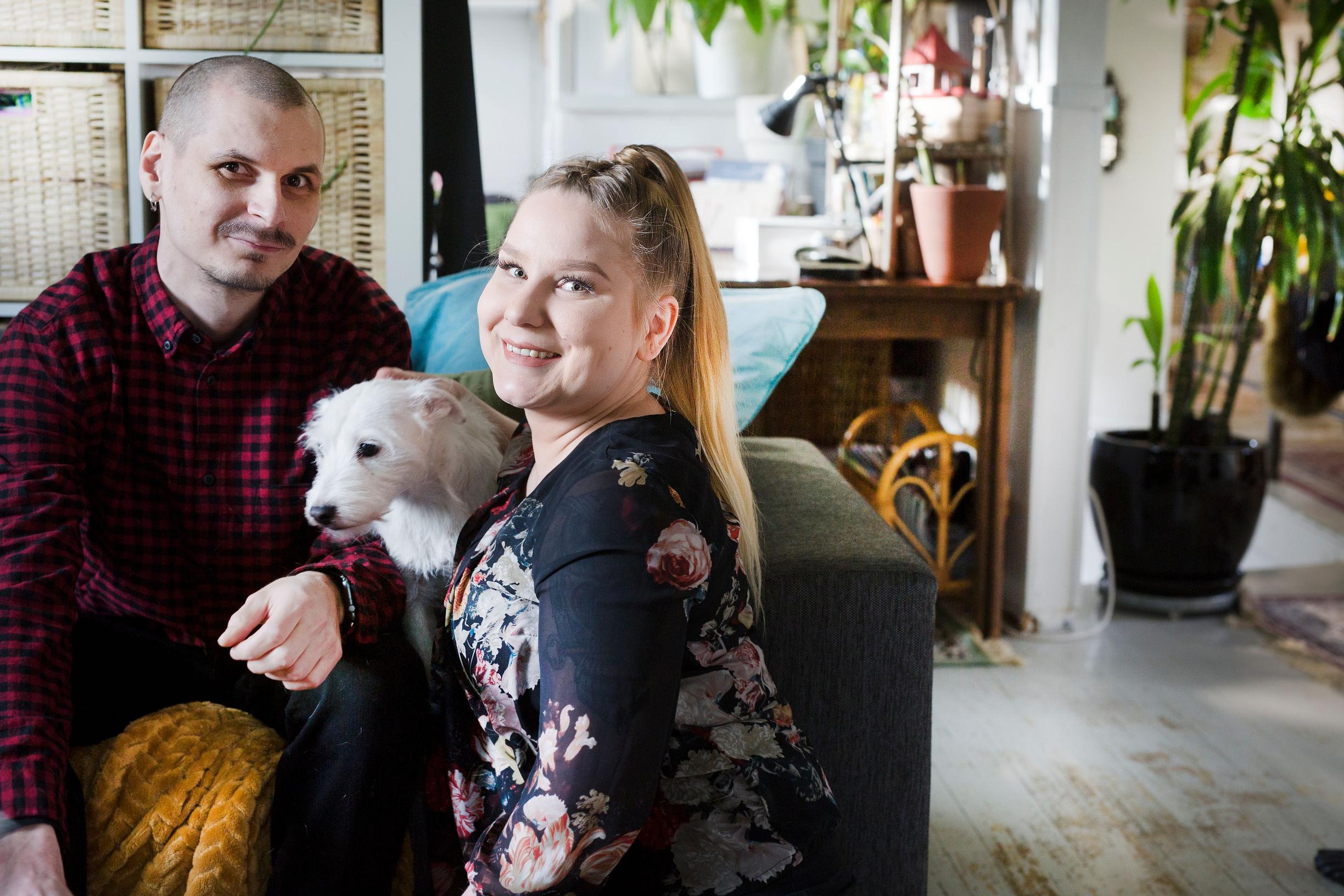
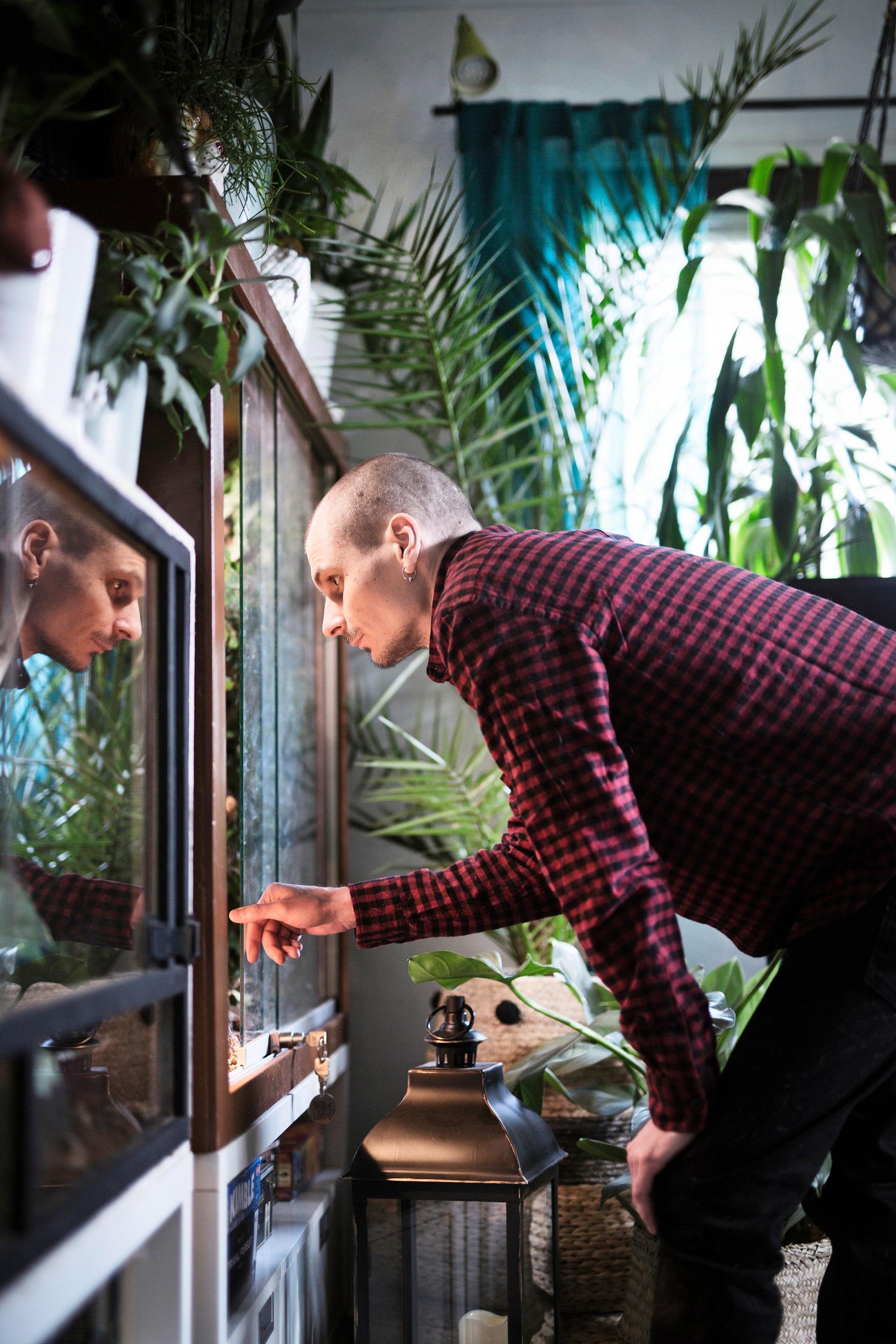
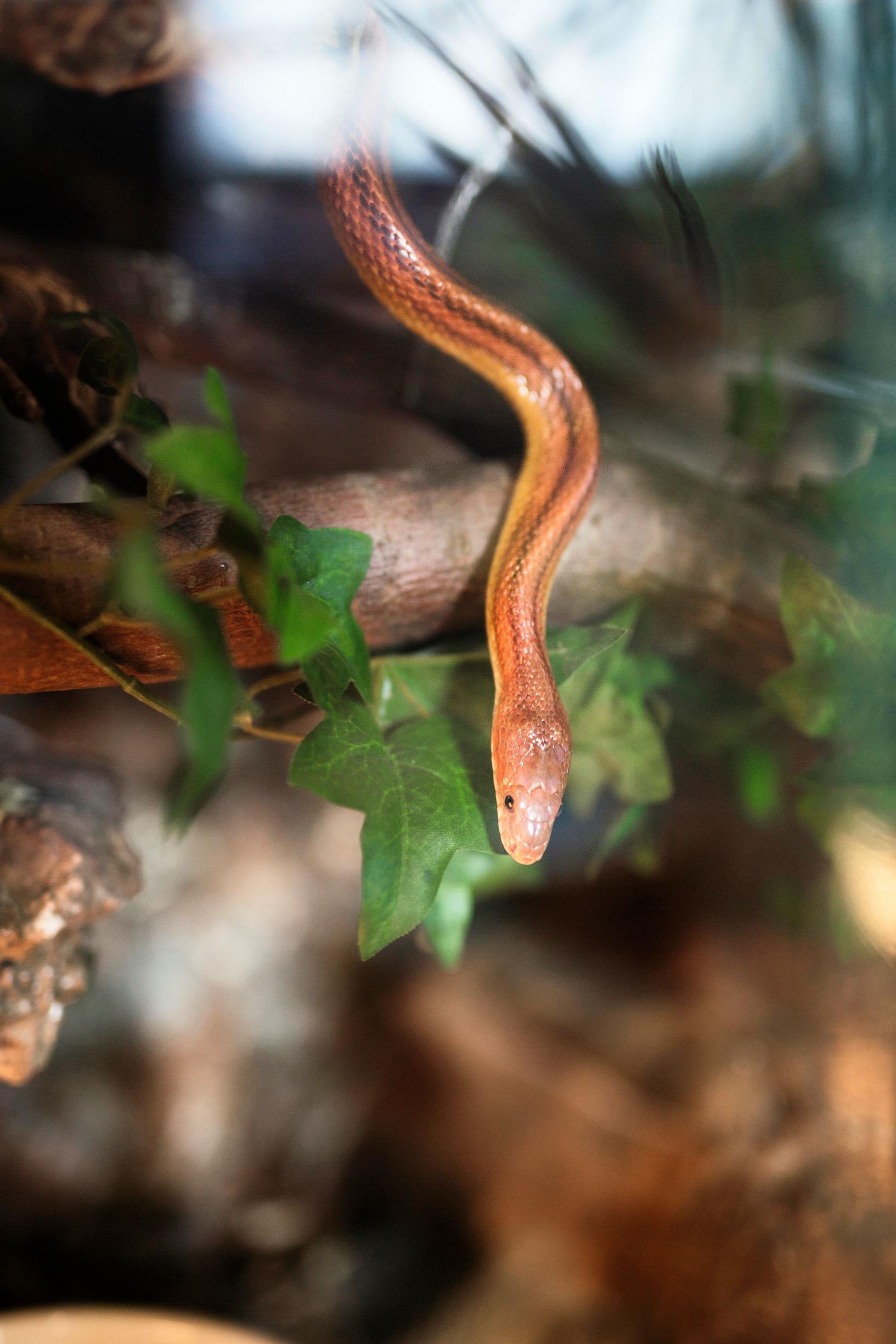
Annika knows that 44 animals in a single-family home can sound wild. A veterinarian has checked their house, even though it wasn’t required. Anyone can start a similar animal refuge, as long as they don’t collect money for it without a fundraising permit.
Annika and Matti cover all the animals’ expenses out of their own pockets. They go through a couple of bales of hay each week, and they buy fresh food, pellets, and dog food for the animals.
Food, bedding, and other regular animal costs total 400–500 euros per month. In addition, vet visits and things like replacing cages often result in extra expenses.
Taking care of the animals is demanding and takes up a large portion of Annika and Matti’s day.
In the morning, Annika and Matti check that the animals have water and hay. In the evening, they feed them and clean out the cages. They finish up in about an hour and a half.
“It’s not my intention to just collect as many animals as possible. They must have optimal living conditions.”
Caring for the animals is even more time-consuming on days when the animals' nails are trimmed, or when Annika and Matti linger to pet those that enjoy a good scratch. Twice a week they have a thorough cleaning day at home, and it can stretch late into the evening.
In addition, the dogs must be walked three times a day, and all the extra tasks like vet visits or picking up new residents take additional time.
Annika hasn’t really needed to advertise her operations. At the very beginning, she shared news of her new animal refuge on social media, but little by little, the word has spread through the grapevine.
However, she can only rarely take in new animals because they stay with her for the rest of their lives. For example, a rabbit can live up to ten years. In recent years, 5–15 new animals have arrived at the refuge annually.
“It's not my intention to collect as many animals as possible. They must have optimal living conditions,” Annika says.
Annika’s passion is to constantly improve the animals’ living quarters so they can enjoy as natural a life as possible.
They need plenty of space, enrichment, permissible items to destroy, such as cardboard boxes, and the opportunity to burrow.
In addition, rabbits and guinea pigs must occasionally be able to roam free. On the other hand, the cages must be as easy to open and clean as possible.
Annika and Matti did most of the surface renovations to the home as soon as they moved in. If they ever had to move out, the entire place would need to be renovated all over again.
“The animals don’t cause major damage, but in their own areas, rabbits might spray the walls, and the claw marks of the dogs are visible on the floor,” Annika says.
Originally, Annika and Matti moved into this house because of the large dogs they had at the time.
“You can still find traces of drool of our great Danes on some of the walls,” Annika says.
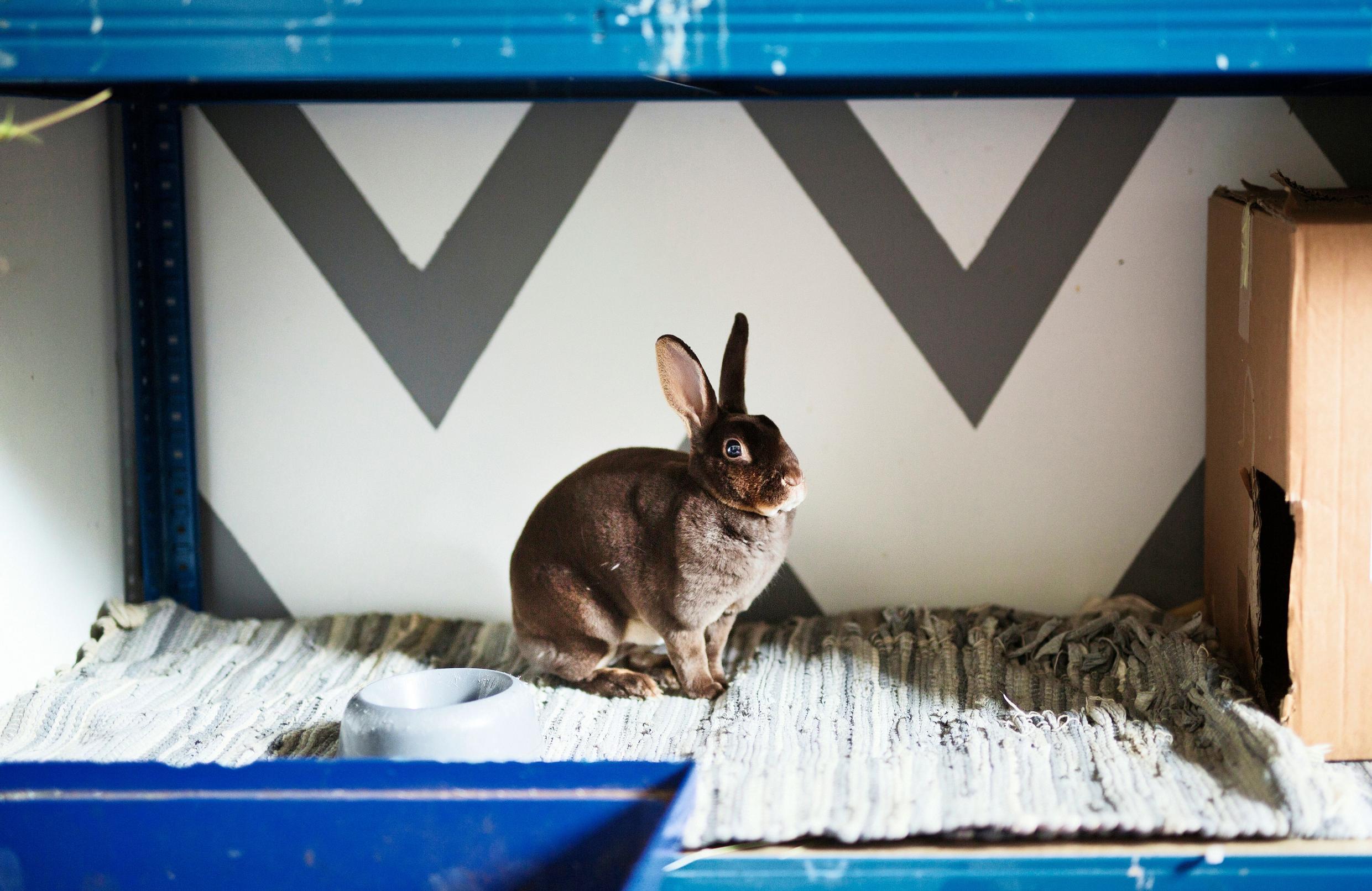
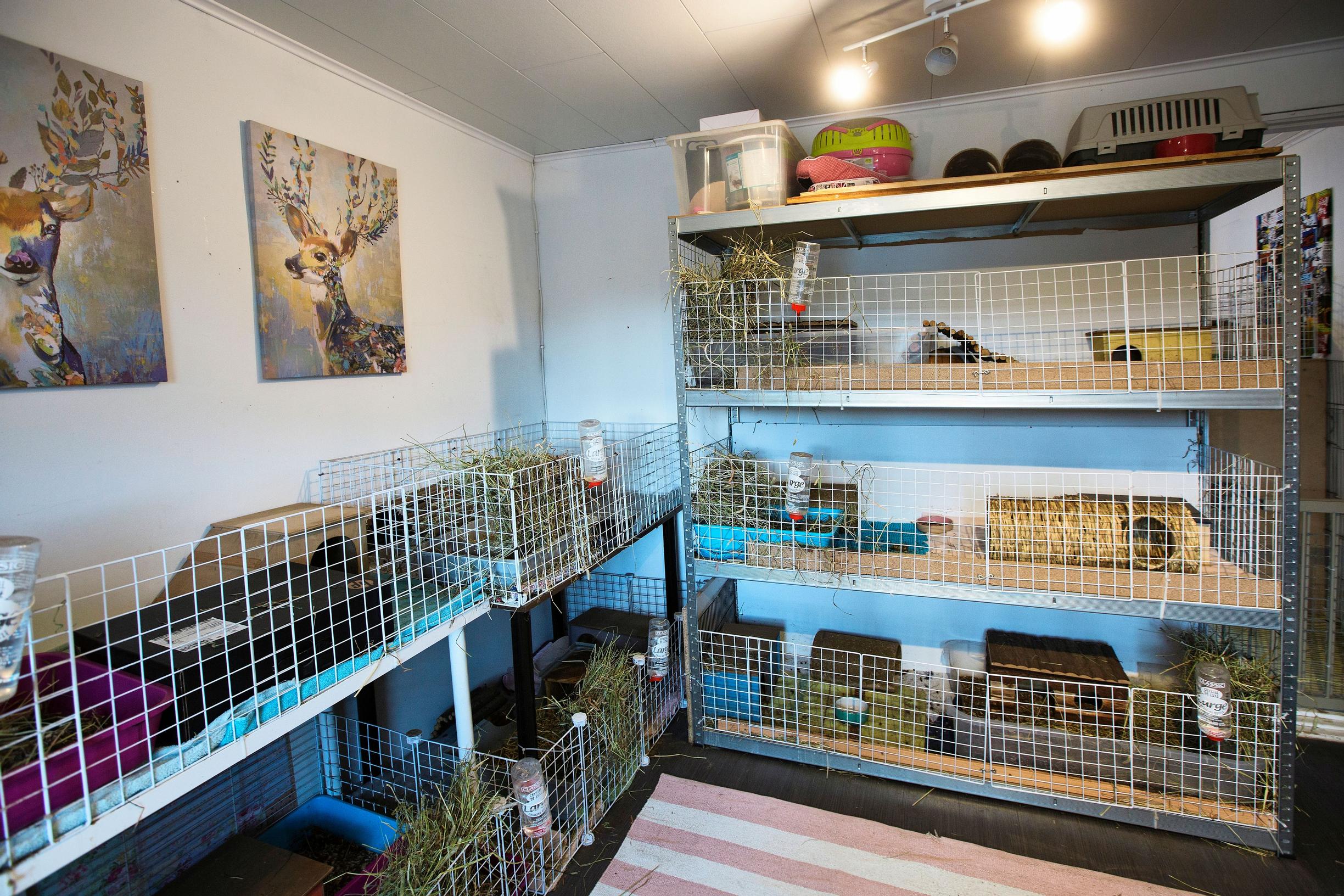
“If I get excited, I jump in wholeheartedly. That’s why it’s good to live with an engineer who occasionally asks me to think things over.”
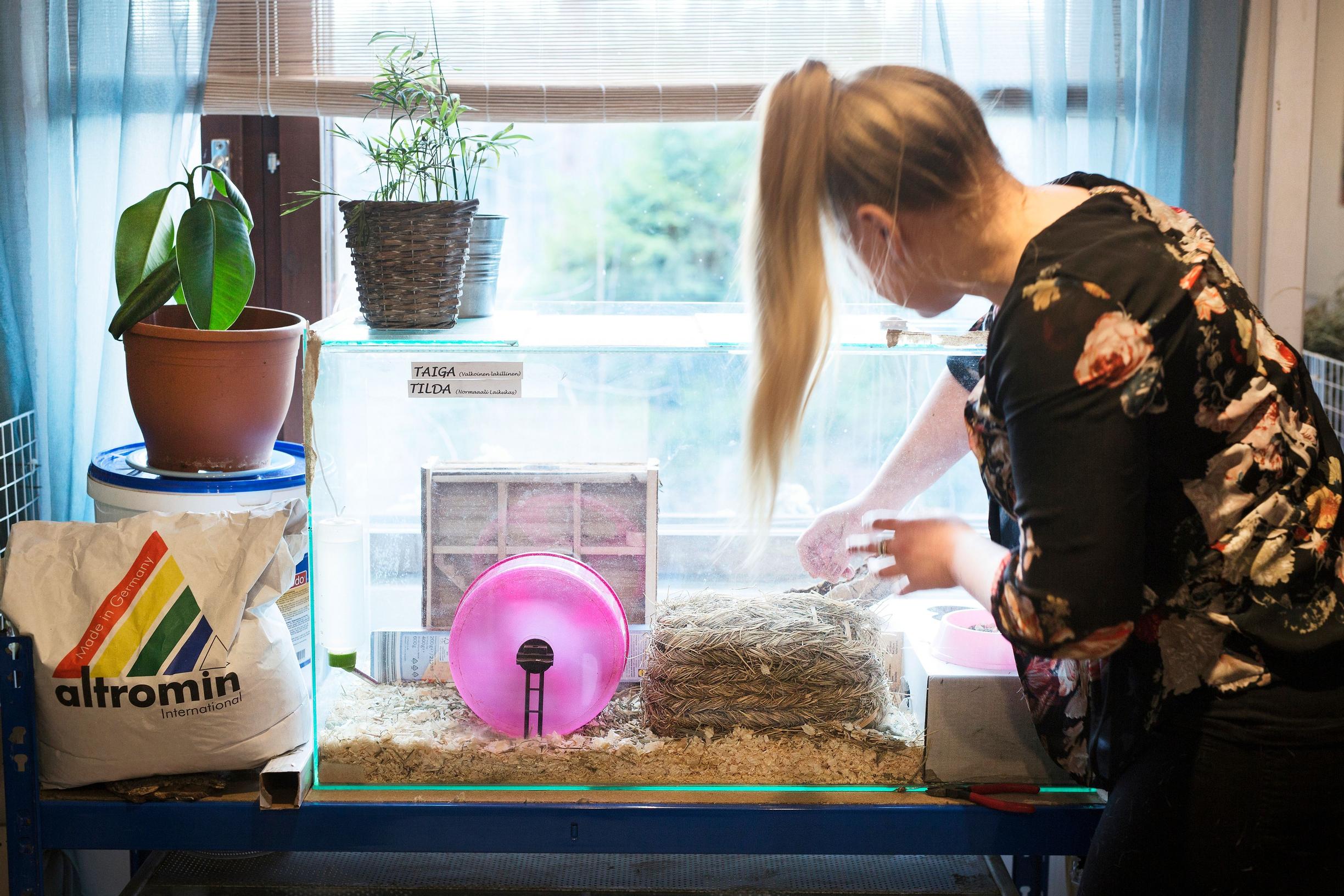
This family spends more time cleaning than most. The amount of laundry is huge every day, because the floors of the cages of the guinea pigs and rabbits are lined with towels that must be changed every couple of days.
The couple does between two and five loads of laundry every day. Hay clings to the bottoms of their socks and spreads throughout the house from the rabbit and guinea pig areas, and the peat mixture used as bedding sends dust everywhere. Despite all that, Annika doesn’t want to keep her home minimalist or easy to clean; her interior style is abundant.
You can also see Annika’s other hobby around the home: there are around two hundred houseplants.
“Because we have so many items on display, we have to dust frequently. Sometimes I think it would be easier to clean without clutter, but this kind of style is more forgiving.”
Abundance makes Annika happy.
“I’m a ‘more is better’ type of person. If I get excited about something, I jump in wholeheartedly. That’s why it’s good to live with an engineer who occasionally asks me to slow down and think. Matti is the reason, I’m the emotion.”
Having so many animals doesn’t actually limit their interior decorating much. It's the two dogs that cause more trouble—especially Kaapo, who tore up rugs and other textiles when he first arrived.
“It doesn’t bother me because most of our stuff is secondhand. If I wanted everything to be perfect, I wouldn’t have taken in so many animals.”
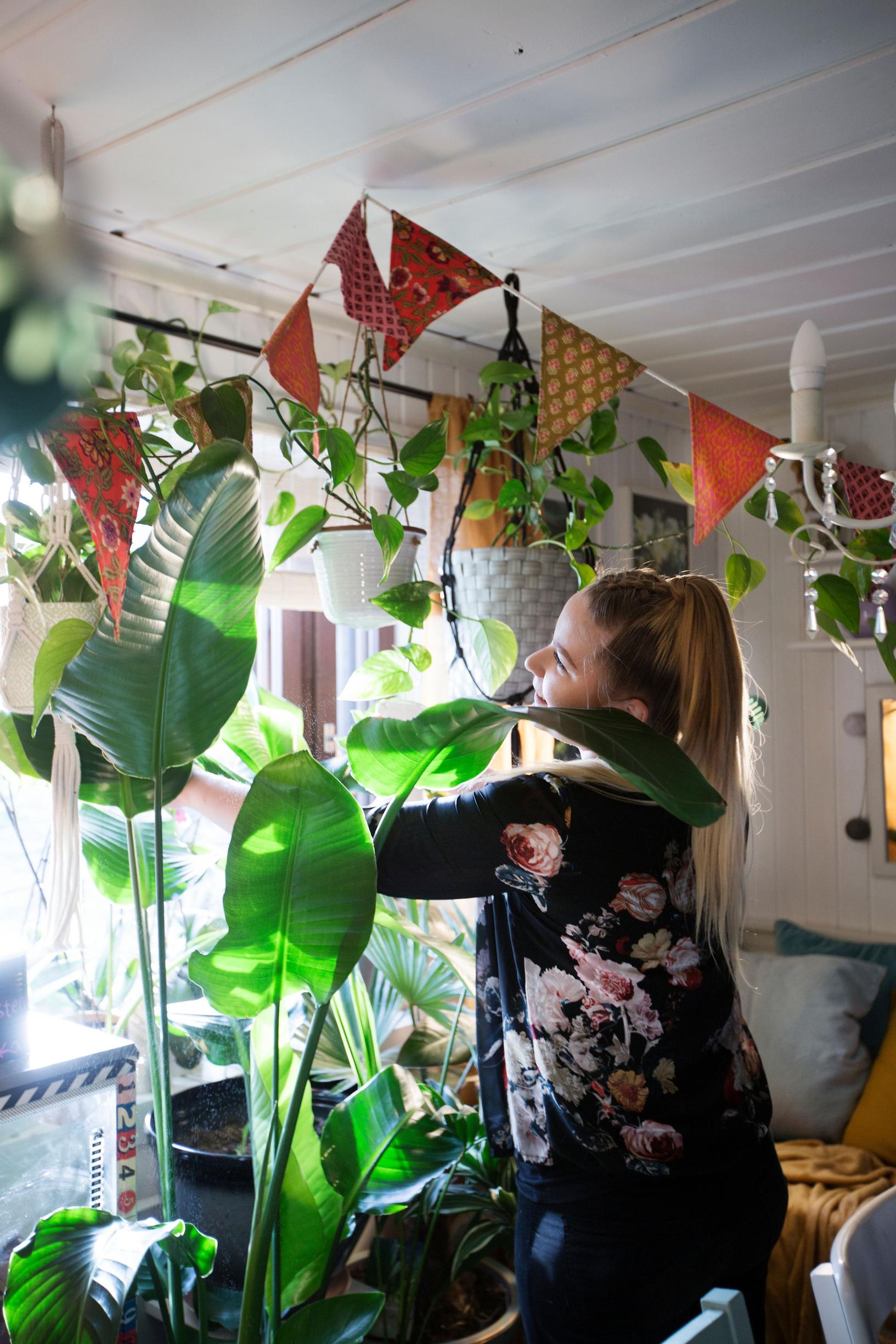
Although the animals demand a lot of time and effort, Annika wouldn’t give up her lifestyle for any small reason. Moving, a breakup, or even many illnesses wouldn’t be reasons for her to surrender her animals.
However, Annika doesn’t question the reasons of those who have decided to give up their animals. Often there are allergies, life-management issues, or financial troubles behind it. Annika has seen some sad stories, but she doesn’t judge.
“It’s good if a person gets in touch with me instead of throwing their rabbit out onto the streets.”
For children, giving up a pet can be a huge deal, but many adults also tear up when the time comes—even if it’s apparent the animal hasn’t been treated well.
Nevertheless, Annika won’t dwell too much on the backstories of the animals.
"I often wonder if what we do makes any difference. But at least it has helped those families and animals we have dealt with over the past five years," Annika says.
The best moments are when a scruffy animal transforms into a healthy rabbit after receiving proper care. Or when Annika puts a guinea pig that used to live in cramped conditions into a large enclosure.
“The guinea pig will run like a tiny piglet, toss its hindquarters in the air, and let out a joyful squeal. There’s no greater delight.”


